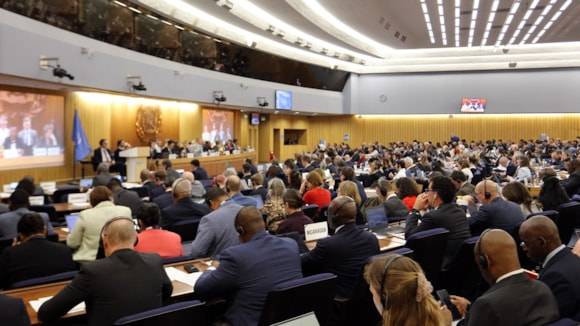IMO Approves Net-Zero Regulations for Global Shipping
The International Maritime Organization (IMO) has achieved another step towards establishing a legally binding framework to reduce greenhouse gas (GHG) emissions from ships globally, aiming for net-zero emissions by or around, i.e close to 2050.
The IMO Net-zero Framework is the first in the world to combine mandatory emissions limits and GHG pricing across an entire industry sector.

Approved by the Marine Environment Protection Committee during its 83rd session (MEPC 83) from April 7-11, 2025, the measures include a new fuel standard for ships and a global pricing mechanism for emissions.
These measures, set to be formally adopted in October 2025 before entry into force in 2027, will become mandatory for large ocean-going ships over 5,000 gross tonnage, which emit 85% of the total CO2 emissions from international shipping.
The IMO Net-Zero Framework will be included in a new Chapter 5 of Annex VI (Prevention of air pollution from ships) to the International Convention for the Prevention of Pollution from Ships (MARPOL). MARPOL Annex VI currently has 108 Parties, covering 97% of the world’s merchant shipping fleet by tonnage, and already includes mandatory energy efficiency requirements for ships.
The goal is to achieve the climate targets set out in the 2023 IMO Strategy on the Reduction of GHG Emissions from Ships, accelerate the introduction of zero and near zero GHG fuels, technologies and energy sources, and support a just and equitable transition.
Under the draft regulations, ships will be required to comply with:
- Global fuel standard: Ships must reduce, over time, their annual greenhouse gas fuel intensity (GFI) – that is, how much GHG is emitted for each unit of energy used. This is calculated using a well-to-wake approach.
- Global economic measure: Ships emitting above GFI thresholds will have to acquire remedial units to balance its deficit emissions, while those using zero or near-zero GHG technologies will be eligible for financial rewards.
There will be two levels of compliance with GHG Fuel Intensity targets: a Base Target and a Direct Compliance Target at which ships would be eligible to earn “surplus units”.
Ships that emit above the set thresholds can balance their emissions deficit by:
- Transferring surplus units from other ships;
- Using surplus units they have already banked;
- Using remedial units acquired through contributions to the IMO Net-Zero Fund.
Additionally, the IMO Zet-Zero Fund will be established to collect pricing contributions from emissions. These revenues will then be disbursed to:
- Reward low-emission ships;
- Support innovation, research, infrastructure and just transition initiatives in developing countries;
- Fund training, technology transfer and capacity building to support the IMO GHG Strategy; and
- Mitigate negative impacts on vulnerable States, such as Small Island Developing States and Least Developed Countries.
Upon approval, the draft amendments to MARPOL Annex VI will be formally circulated to IMO Member States, followed by:
- October 2025 (MEPC/ES.2): Adoption of the amendments during an extraordinary session of the Marine Environment Protection Committee.
- Spring 2026 (MEPC 84): Approval of detailed implementation guidelines.
- 2027: Expected entry into force, 16 months after adoption (in accordance with MARPOL articles).
The meeting discussed a range of issues related to protecting the marine environment from shipping activities, with the following key outcomes:
- Adoption of 2025 Action Plan to combat marine plastic litter;
- Progress in the review of the Ballast Water Management Convention;
- Approval of a proposal to designate the North-East Atlantic as an Emission Control Area and agreement in principle to designate two new Particularly Sensitive Sea Areas off South America’s Pacific coast;
- Approval of the draft Work plan on the development of a regulatory framework for the use of Onboard Carbon Capture Storage systems (OCCS)
- Approval of draft amendments to regulation 27 of MARPOL Annex VI regarding accessibility of the IMO Data Collection System
- Adoption of amendments to the 2021 Guidelines on the operational carbon intensity reduction factors relative to reference lines (CII reduction factors guidelines, G3)
- Approval of a new output to develop a legally binding framework on biofouling management, to prevent the spread of harmful invasive aquatic species
